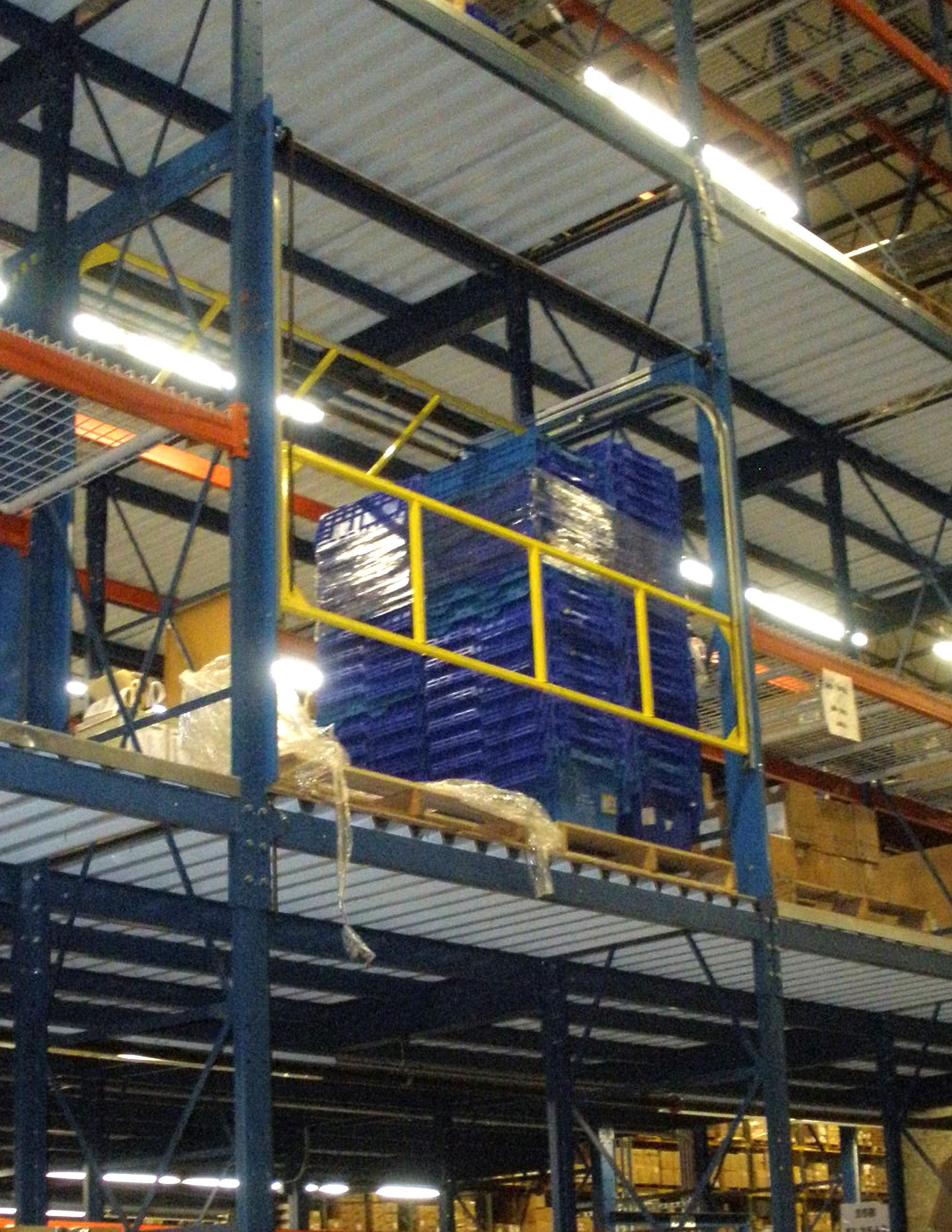
Pick Module Safety Gate Selection Guide
Has a rack-supported pick module recently been installed in your material handling or distribution facility? Is there one in the plans for the near future? While these systems are ideal for moving products through a facility efficiently, as well as maximizing space, it’s imperative to maintain a safe environment in the modules.
Pick modules are multiple level systems used to store inventory and to pick items for order fulfillment. By design, these systems place material and people on elevated levels. One of the main safety concerns is creating a fall protection barrier while employees on these elevated levels are picking items off of the pallets or stacking empty pallets to be removed. Like an elevated work platform or mezzanine, rack supported pick modules need fall protection systems. OSHA mandates that any working surface 48" or taller according should be guarded, and ANSI standards mandate the fall protection equipment at 36” or higher.
Pallet drop safety gate systems provide fall protection for these picking positions by securing the pallet drop areas with a gate at the ledge and a second gate behind the pallet. These two gates are counterbalanced and interconnected so one gate is always closed, separating the operator from the ledge, creating a safe environment while the employee picks items from the pallet. These systems are typically manually operated but can be powered for remote access by the lift truck operator.
Some pallet drop safety gate designs are engineered specifically for pallet drop areas in rack systems. These systems utilize the existing pallet rack for the frame of the design. By attaching to the existing rack uprights, the safety gate does not require its own support frames that need to be bolted into the decking where it would take up valuable space in the rack bay and could be damaged by lift trucks. It is best when these solutions are designed into the system by a rack provider or system integrator before installation so the rack system can be engineered to accommodate the safety equipment, but they also can be retrofitted at a later date if needed.
Several dual-gate safety designs are available in a rack-supported configuration, and each design provides an advantage. These models can provide safety without impeding production, even if you are loading large items, have narrow aisles or limited overhead space. To help you proactively secure these areas, we’ve provided an easy way to determine the best configuration for your system.
Narrow Aisles/Limited Aisle Space
The original rack-supported pallet drop safety gate system, the Rack-Supported Roly gate, is the best choice for most applications, as the gates never extend into the truck or picking aisle, and do not interfere with the truck loading the upper levels of multi-level picking systems. The advantage of this system is that the gates open and close within the confines of the pallet drop area so the gate at the ledge opens and closes flush with the ledge and the rear gate is flush with the rear uprights of the system.
Limited Pallet/Material Space
In pallet drop areas with limited space, the Rack-Supported Pivot safety gate is the best choice, as it provides the most free space behind the pallet. With the pivoting framework, the rear gate extends back beyond the upright to secure the pallet, then moves out of the way when the ledge gate is closed, eliminating the need for a permanent structure to be located behind the upright. It is important to make sure the moving gates will not interfere with the truck aisle and there is adequate clearance in the pallet area, as this design will extend out into the truck aisle and back into the picking aisle when the gate is operated.
Conveyor Operations/Limited Platform Depth
If depth on the platform is limited due to the location of a conveyor or a narrow aisle, then your best safety gate solution may be the Rack-Supported Tri-Side gate. This safety system uses a gate that moves straight up and down at the ledge, and never extends into the lift truck aisle. A rear ‘u’-shaped gate that closes to capture the pallet then moves up and out of the way to provide egress behind the area.
Flow Lanes
If the picking bays include pallet flow lanes in which multiple pallets deep are loaded, then you should install a version of the Rack-Supported Roly gate that is designed as deep as the flow lane. The additional depth ensures there is a gate in place at all times and prevents an employee from entering the aisle while the area is being loaded. This is especially important in a cluster-picking design where employees travel an aisle between the lanes to pick from multiple pallets at the same time.
If you have further questions about which safety gate design is best suited for your pick modules, be sure to discuss them with your rack provider, system integrator or safety gate manufacturer.